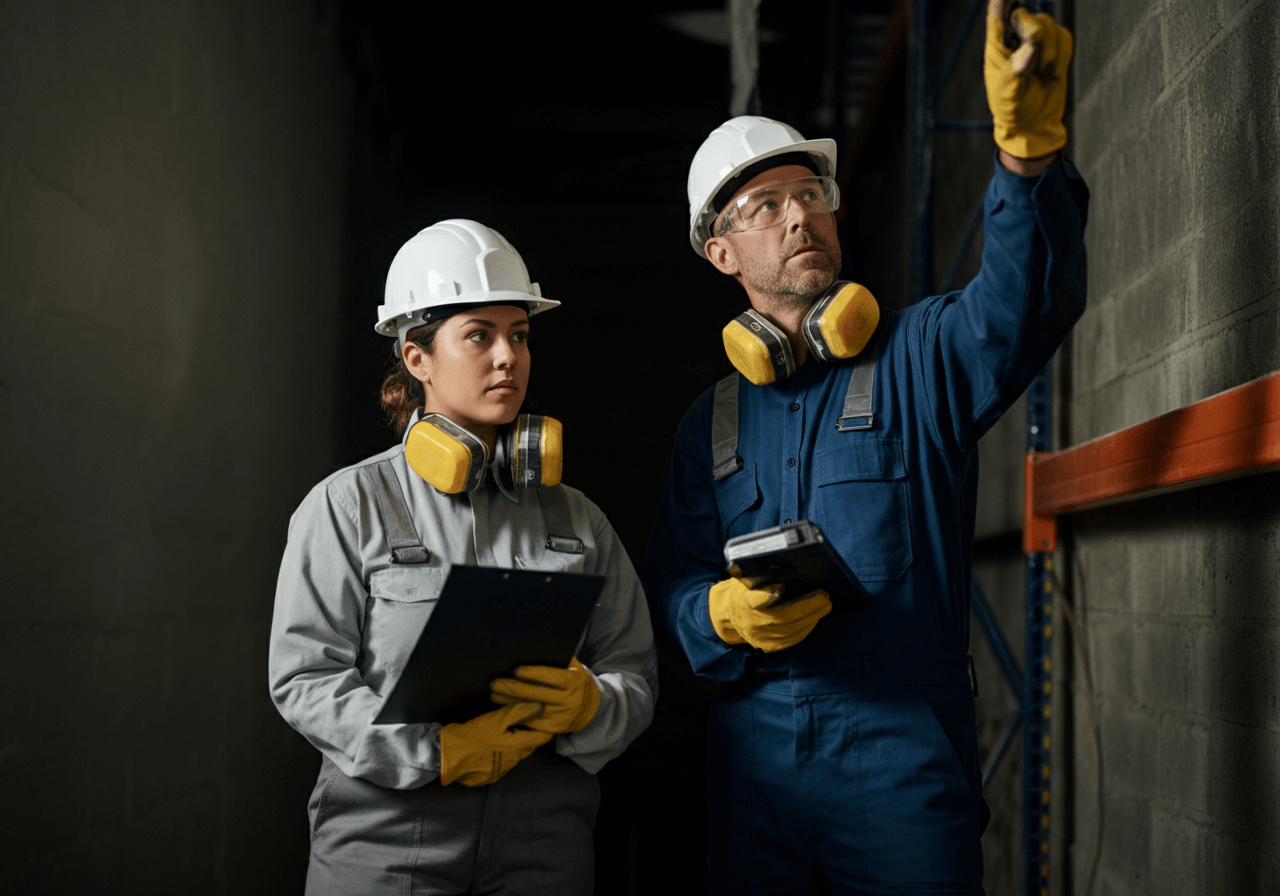Utilities crews often work in environments that present unique challenges. Among the most important of these are confined spaces, which require careful planning, specialised skills, and a strong commitment to safety. By understanding the risks involved and providing thorough confined space training, employers can ensure their teams are both safe and efficient.
AlertForce has been working with the utilities sector for many years, providing training and guidance that meet the highest safety standards. This article will explore the essential risks found in confined spaces and outline the key training steps every utilities crew should follow to maintain compliance and operational excellence.
Understanding Confined Spaces in Utilities Work
A confined space is an enclosed or partially enclosed area that is not designed for continuous occupancy and has limited entry or exit points. In the utilities sector, these spaces can include water tanks, sewer lines, underground vaults, pipelines, and pump stations.
Confined spaces are not inherently unsafe, but the specific conditions within them can create hazards if they are not identified and managed correctly. This is why awareness, planning, and training are critical. When utilities crews have the right knowledge, they can approach these environments with confidence and competence.
Five Key Risks in Confined Spaces
1. Oxygen Deficiency or Enrichment
One of the most common risks in confined spaces is an abnormal oxygen level. A reduction in oxygen can occur naturally or due to certain processes in space. Similarly, oxygen enrichment can increase the risk of fire. Monitoring oxygen levels before and during entry is essential for safety.
2. Hazardous Gases or Vapours
Confined spaces may contain gases such as methane, hydrogen sulphide, or carbon monoxide. These can be harmful if inhaled, even at low concentrations. Gas detection equipment is a vital tool for identifying these hazards before work begins.
3. Engulfment Hazards
Some confined spaces contain liquids or loose materials such as grain, sand, or sludge that can surround and trap a person. Recognising these conditions before entry allows crews to implement control measures to prevent incidents.
4. Restricted Entry and Movement
The physical design of confined spaces can make entry, exit, and movement challenging. Workers may need to use specific techniques or equipment to navigate safely. Planning for these restrictions is part of effective confined space training.
5. Equipment or Operational Hazards
In some cases, confined spaces house machinery, valves, or other operational equipment. If these are not isolated or controlled, they may pose risks to workers. Training ensures crews know how to secure equipment before beginning any work.
Legal and Best Practice Frameworks
In Australia, confined spaces are regulated under the Work Health and Safety (WHS) Regulations and related Codes of Practice. Employers in the utilities sector are responsible for identifying confined spaces, assessing risks, and implementing controls that keep workers safe.
Best practice goes beyond compliance. It includes investing in high-quality training, maintaining up-to-date equipment, and fostering a culture where workers feel empowered to raise safety concerns. AlertForce training programs are designed to meet all legal requirements while also promoting practical, on-the-job safety skills.
Training Steps for Safe Confined Space Operations
Step 1: Hazard Identification and Risk Assessment
Before entering a confined space, crews must identify all potential hazards. This includes checking for oxygen levels, flammable gases, toxic vapours, and engulfment risks. A thorough risk assessment ensures that all control measures are in place before work begins.
Step 2: Permit-to-Work System
A confined space entry permit outlines the specific safety measures for the task, including authorised personnel, equipment to be used, and monitoring requirements. Following this system ensures that every entry is controlled and documented.
Step 3: Personal Protective Equipment and Monitoring Devices
Workers should be trained in the correct use of personal protective equipment such as respiratory protection, harnesses, and protective clothing. Gas detection and air monitoring devices should be used to check conditions before and during the work.
Step 4: Communication Protocols
Effective communication is vital in confined space work. Crews should establish clear communication methods between the worker inside the space and the standby person outside. This ensures a quick response in the event of a change in conditions.
Step 5: Emergency Preparedness and Rescue Planning
Even with thorough preparation, unexpected situations can arise. Training should include emergency procedures, rescue techniques, and the use of retrieval equipment. Regular drills help ensure crews can respond quickly and effectively.
Building a Strong Safety Culture
Confined space safety is not just about procedures and equipment. It is about building a culture where safety is part of every decision and action. This means encouraging workers to share observations, ask questions, and participate in ongoing training.
Refresher courses are essential to maintain skills and keep up with regulatory changes. AlertForce offers ongoing support for utilities crews, ensuring that training is not a one-time event but part of continuous improvement.
Benefits of Investing in Confined Space Training
When utilities crews receive high-quality confined space training, they work more efficiently and with greater confidence. Safety measures become second nature, reducing the likelihood of disruptions. Compliance with WHS regulations is maintained, and teams can focus on delivering quality work.
Clients and stakeholders also value the professionalism that comes from a well-trained crew. By partnering with an experienced provider such as AlertForce, utilities businesses can enhance their reputation, meet all safety requirements, and ensure the well-being of their workforce.
Conclusion
Confined spaces in the utilities sector present unique challenges, but with the right approach, they can be managed safely and effectively. Understanding the key risks, following legal frameworks, and investing in comprehensive confined space training creates an environment where crews can work with confidence.
AlertForce is committed to helping utilities teams across Australia develop the knowledge, skills, and confidence they need to operate safely in confined spaces. By combining expert instruction with practical, hands-on training, we ensure that crews are prepared for any situation they may encounter.
For utilities businesses looking to enhance safety, compliance, and performance, investing in confined space training is a smart, forward-thinking decision that benefits both workers and the organisation as a whole.
Frequently Asked Questions:
1. What is a confined space in utilities work?
A confined space is an enclosed or partially enclosed area with limited entry or exit points, not designed for continuous occupancy. In the utilities sector, examples include water tanks, sewer lines, pipelines, and underground vaults.
2. Why is confined space training important for utility crews?
Confined space training equips workers with the knowledge and practical skills needed to identify hazards, use control measures, and work safely. It also ensures compliance with Australian WHS regulations.
3. What are the main risks in confined spaces?
Common risks include abnormal oxygen levels, hazardous gases or vapours, engulfment hazards, restricted movement, and equipment or operational hazards. These are best managed through planning, monitoring, and training.
4. How does AlertForce help with confined space safety?
AlertForce provides industry-specific training programs that meet WHS compliance standards while focusing on practical skills. This includes hazard identification, permit systems, equipment use, communication, and emergency preparedness.
5. What steps are included in confined space safety procedures?
Key steps include conducting hazard identification and risk assessments, using a permit-to-work system, wearing the correct PPE, maintaining communication protocols, and having a detailed emergency rescue plan.





















